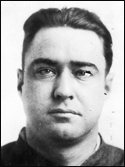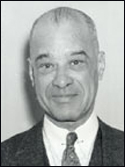Headline Archives |
|||||||||||||||
| FBI 100 The Top Ten Myths in FBI History |
|||||||||||||||
| 07/24/08 | |||||||||||||||
|
For the past century, the FBI has been a vital player in American history, front and center in some of our country’s most high-profile national security and criminal issues. Not surprisingly, some myths and misunderstandings about the Bureau have evolved over that time, in part because of the complex and sometimes sensitive nature of our work. We’ve picked out what we think are the top ten myths down through the years, leaving aside ones that are so fanciful that they don’t deserve mention here… In descending order, here they are: Myth #10) The FBI has Nikola Tesla’s plans for a “death ray"!
Myth #9) The FBI has “X-Files.” Well, first off, the FBI is NOT on point to investigate the supernatural as Scully and Mulder did on the X-Files TV show. Yes, we do have files on some unusual phenomena—like cattle mutilation, UFOs, and Roswell—but generally only because people reported something and we made a note of it. Some of the files do involve cases involving a potential violation of federal law under our jurisdiction that we did investigate. One example is Operation Majestic 12, the supposedly secret group of government officials tasked by President Truman to study the Roswell incident. When what appeared to be a top secret document about the formation of the Majestic 12 surfaced in the 1980s, we were asked to investigate a possible breach of classified information. The Bureau concluded that the document was a fake. So, bottom line: while FBI agents chasing aliens and other supernatural creatures may make good entertainment, it’s not part of our job description, and we don’t have a secret collection of “X-Files” squirreled away somewhere. Myth #8) Elliot Ness was an FBI agent. No, actually he never was. But he did work briefly under Director J. Edgar Hoover and applied at one point to be a Bureau agent. It’s a fairly complicated story, and you can read all about it and check out our public files on Ness on this website.
Myth #7) Machine Gun Kelly gave FBI agents their “G-Men” nickname. It’s somewhat of a legend now that FBI agents were named “G-Men” when a scared and tired gangster named George “Machine Gun” Kelly stumbled out of his hiding place, arms held high, surrounded by lawmen, yelling “Don’t shoot, G-Men, don’t shoot.” But in reality, Kelly may have never uttered these words. A bit of editorial license on the part of the press likely crept in…and the catchphrase ended up capturing the public’s imagination. Read a story on the nickname and hear FBI Historian Dr. John Fox’s take on it. Myth #6) The FBI prosecutes cases. We are investigators, not prosecutors. Our job is to gather the facts and evidence and present the results to the local U.S. Attorney in the Department of Justice, who decides whether or not to bring the case to trial. Because we developed the facts, we may be asked to present or discuss our findings in court.
Myth #5) There were no minority agents during the Hoover years. The FBI was hardly way ahead of its time in providing equal career opportunities to all Americans, but it is not true that the FBI was unwilling to hire minorities during Hoover’s tenure…or (as one variation of the myth goes) was reluctant to hire minority agents until ordered to do so by President Kennedy in the early 1960s. The fact is, many minority special agents worked in the FBI from the early 1920s forward. An African-American agent named James Amos, for example, investigated major cases in New York from 1921 to 1953, while the Striders—an African-American father/son agent team in Los Angeles—served with distinction from the 1940s through the early 1970s. Hispanic Agent Manuel Sorola served in a number of our western offices from the 1920s through the 1940s, and Filipino-born Agent Flaviano Guerrerro served ably in the 1940s. All told, there were dozens of minority special agents on our rolls before Hoover died in 1972. Myth #4) The Bureau routinely spies on the American people. Absolutely not. We are governed by and carefully follow a well-defined set of laws, regulations, and guidelines—honed over a century of practical experience—that spell out how we can and should conduct our investigations. It’s always been a delicate balance between harnessing the tools at our disposal to solve crimes and prevent attacks and upholding the civil liberties of all Americans. Over the course of a century, we’ve made some mistakes, but they’ve been few and far between compared to the vast amount of work we do every day. While some have long predicted that the FBI would turn into a big-brother-like secret police force, that scenario simply hasn’t happened. After all, we live and work in our communities and cherish our country’s rights and freedoms like everyone else! Myth #3) The FBI doesn’t cooperate with other agencies. You’d think from the news media and the entertainment industry that we do everything from routinely stiffing our partners…to hogging all the credit in big cases…to simply not getting along with our colleagues. If you worked for the Bureau—and saw the close relationships and even friendships that exist between us and our partners across the country and around the globe—you’d realize that nothing could be further from the truth. Yes, there is an occasional conflict or issue (we are all humans, after all), but relationships have been exceptional over the years and improved even more since 9/11. Read some recent stories about our partnerships. Myth #2) The FBI has files on every American.
Myth #1) The FBI can’t or shouldn’t do intelligence. It’s an old saw that has been oft-repeated since 9/11. But a century of history says differently. From our earliest moments we’ve used intelligence (under the laws and guidelines of the day) to get our arms around major threats and disable them—from gangsters to mobsters, from yesterday’s Soviet spies to today’s terrorists. The fact is, the FBI has always been both an intelligence agency and a law enforcement/national security organization…and like our police and intelligence community counterparts, gathering and sharing and acting on intelligence is part of what we do on a daily basis. We’ve certainly gotten better at it since 9/11, and you can bet that we’ll keep improving in the days ahead. Read our new centennial history book and our recent stories for some telling examples. FBI 100 Series:- The Last Steps of John Dillinger - Our New Centennial History Book - The Top Ten Moments in FBI History - "FBI Day" Celebrations | Gallery - The Kansas City Massacre - Bonnie and Clyde - The Unabomber - The Lindbergh Kidnapping - First Strike: Global Terror in America - An Odd Couple of Crime - The FBI History website |
 |
 |
 |
|
|



